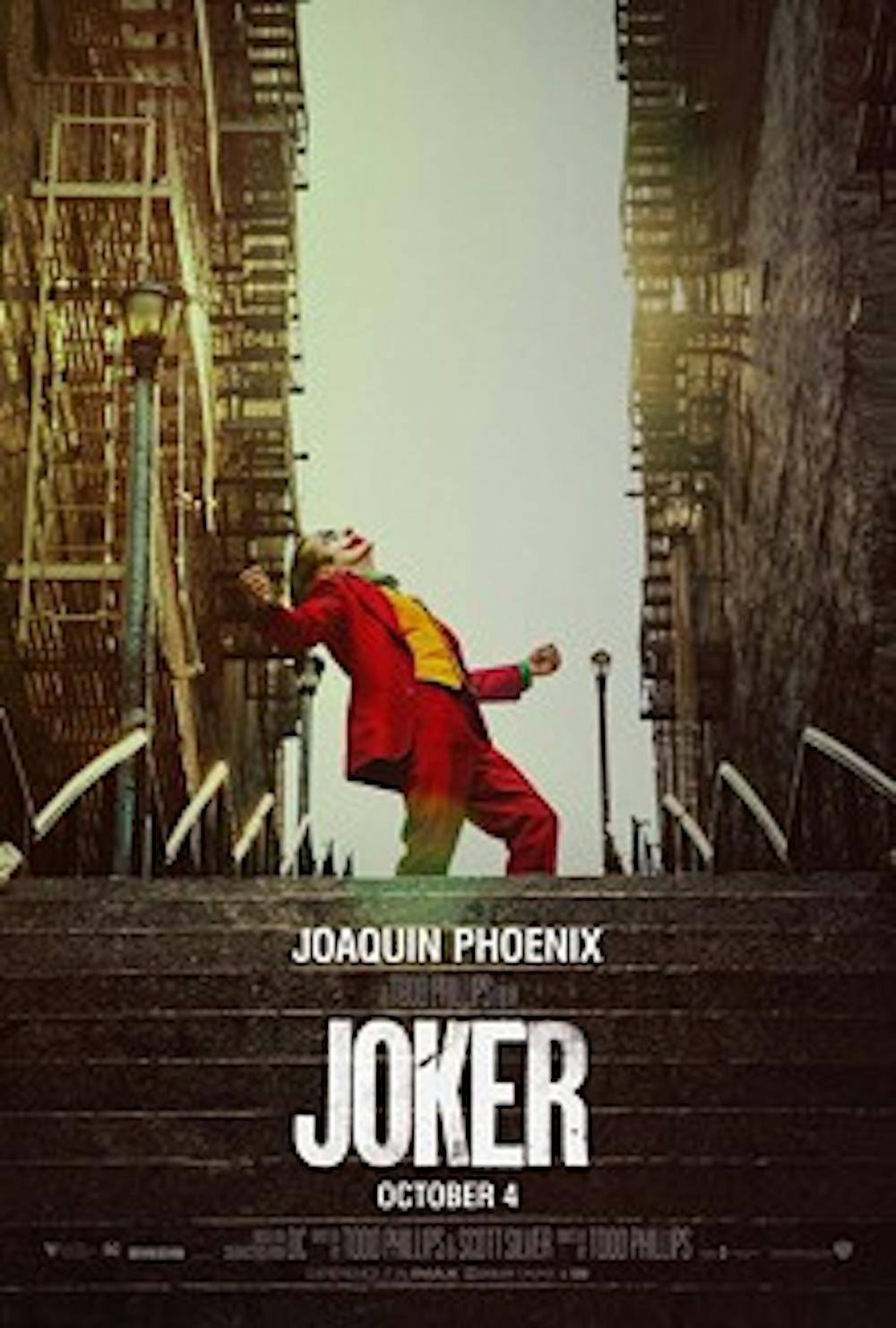If you were not a fan of lighthearted fluff like “No Country For Old Men” (2007) or “Manchester By The Sea” (2016), then “Joker” (2019) is the movie for you.
Directed by Todd Phillips, “Joker” has zero levity. There is only one scene that does not immediately turn you into Eeyore of the Hundred-Acre Wood, and that segment is still really creepy. In it, Arthur Fleck (Joaquin Phoenix) — who becomes the titular Batman antagonist — dances with his ailing mother (Frances Conroy). Arthur grins while he sways his thin frame, leading his mother across the living room of their dingy apartment. Happy times.
“Joker” is irrefutably an artistic success. The movie seamlessly acts as a comic book film and art house character study, and Joaquin Phoenix gives a gut-wrenchingly committed lead performance. “Joker” is also the third best film of 2019 so far. (In my opinion Quentin Tarantino’s “Once Upon A Time In Hollywood” still towers, closely followed by Nisha Ganatra’s witty, woefully underrated “Late Night.”)
But one cannot entirely recommend “Joker.” Watching the film is like sitting through Richard Wagner’s 15-hour “Ring Cycle.” Yes, Wagner’s music is beautiful, but such an ordeal drains the body and soul. To appreciate the undeniable power of “Joker,” one has to watch two hours of sadness, gore, topsy-turvydom and rage. Take it or leave it.
“Joker” is set sometime in the 1980s. In the first scene, we see Arthur working as a clown-for-hire at a garage sale. He holds up a sign that reads “Everything Must Go.” A green wig and pale makeup envelop his face, giving him a vampiric mein. Cars, rats and floating garbage dart across the screen.
Arthur’s “Everything Must Go” sign gets stolen by some teenagers. He rushes after them in his large clown shoes, panting. The teenagers then attack Arthur and leave him lying in an alleyway. He laughs while crying, seemingly amused by his own torment. Everything Must Go.
Phillips thus establishes his protagonist: Arthur is one of Gotham’s meek who have not inherited the earth. He also has an odd mental condition — uncontrollable laughter. This tick proves to be a challenge for his career in stand-up comedy. Another problem is Arthur’s sense of humor. “Don’t you have to be funny to be a comedian?” asks his mother.
Arthur worships talk show host Murray Franklin (Robert De Niro), whose show he hopes to one day appear on. His sick mother stays at home, rambling all day about how she used to work for Gotham billionaire Thomas Wayne. Mother and son have spent their whole lives looking up to television icons. Arthur now wants to become a star.
So he gets a handgun.
After that, “Joker” gets quite gory. Arthur’s first murders are in self-defense, but his crimes slowly escalate in their moral dubiousness. In becoming the Joker, Arthur gives away his soul, losing the audience’s sympathy.
Phoenix has always liked to play things large and loud, projecting emotions with body language rather than diction. His over-the-top style works perfectly in “Joker.” When Arthur takes a long drag of a cigarette after a shockingly violent deed, Phoenix contorts his stomach and cheeks. The actor thus suggests a bleak metaphor: for Arthur, killing is an addictive stimulant. Subtlety be darned — Phoenix is a rockstar in “Joker.”
The supporting cast and crew of “Joker” give solid performances. Robert De Niro shines in two scenes as Arthur’s idol Murray Franklin. The film’s best scene is when Franklin gives an unexpected rebuttal to Arthur on live-television. One cannot look away from two great actors like De Niro and Phoenix trading barbs, clearly having a ball.
Despite her limited screen time, Zazie Beetz deftly plays Sophie, Arthur’s love interest. Her role highlights one of “Joker’s” most unsettling motifs: the female characters are really cursory. Arthur’s mother and his two female therapists scoff and complain, but only the men in “Joker” interest Arthur.
Lawrence Sher’s cinematography highlights the grunginess of Gotham. In a particularly stunning shot, we watch in slow-motion as Arthur dances on a city street puddle, splashing water onto his emerald hair. He leaps up and down, playing an imaginary guitar. Sher portrays this silly jig like a war dance.
Aside from Phoenix, the best contributor in “Joker” is Hildur Guðnadóttir, who composed the film’s mournful score. We always hear a cello strum lightly, even while carnage covers the frame. Arthur might start out as a petty loser, but Guðnadóttir’s score suggests an underlying logic to his evil.
Filmgoers will inevitably compare Phoenix’s interpretation of the Joker with Heath Ledger’s in “The Dark Knight” (2008). In that film, the Joker blows up buildings with chaotic glee, turning Gotham into a smokey rubble. Ledger’s villain is a terrorist.
A decade after “The Dark Knight,” Phoenix gives us an equally timely interpretation of the Joker. Arthur is an unreliable narrator — the last act of the film might be “fake news.” All we know for sure is that Arthur starts and ends the story as a thin-skinned, media-obsessed narcissist. “Joker” is based off of an antagonist created in 1940, but the movie focuses on the villains of 2019.
Reel Critic: 'Joker'

Comments



